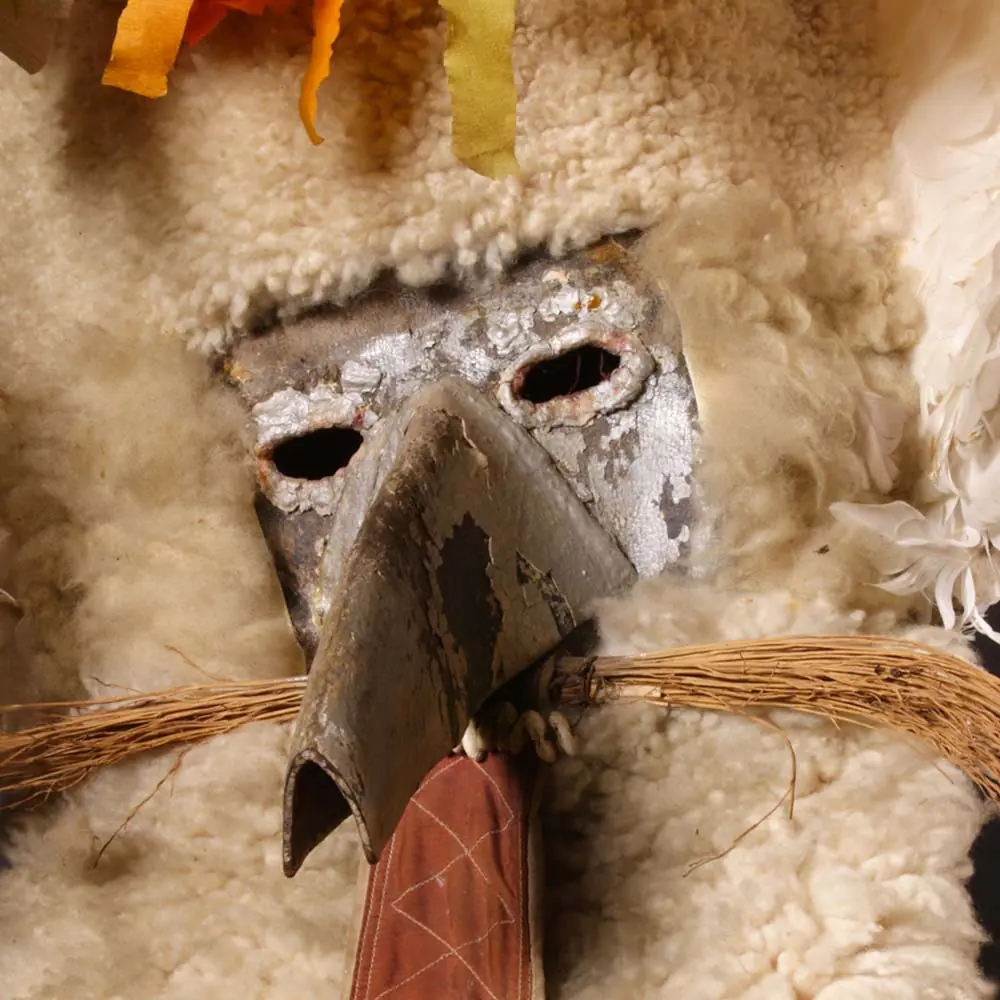The plains of Ptujsko and Dravsko polje and the hills of Haloze and Slovenske gorice in north-eastern Slovenia attract attention for the large number of diverse traditional carnival costumes found here.
The costumes are not just carnival props to disguise oneself and become something else. Since time immemorial, people have used masks and magical practices to commune with the afterlife, demons, and ancestral spirits in an attempt to understand and influence what is happening in nature and the tribal community. Traditional carnival characters go from house to house, asking for gifts from the hosts and, in return, bestowing blessings on them. They hop and stomp to awaken growth and invite a good harvest.
The Carnival, Pust, is celebrated on Shrove Tuesday, which is always 46 days before Easter.

Korant or Kurent
The most popular and plentiful carnival character from this area is the Korant or Kurent. According to ancient belief, the Korant chased away winter and invited spring into the land.
Today, groups of Korants make door-to-door rounds accompanied by Devils. They also traditionally act as attendants to the Carnival Ploughmen, who plough symbolic furrows to invite good crops.
The Korant’s garb is called korantija. Until the mid-20th century, the costumes were made by the wearers themselves from animal skins, old leather bags and boots. Coats were sewn from pieces of sheep, rabbit and other animal skins, or the men wore winter furs turned inside out. Chains and bells were found at home, either borrowed or homemade.
Influenced by folklorism and the emergence of permanent korantija makers, the Korant began to take on its present form from the 1960s onwards.
In 2017, the Door-to-door rounds of Kurenti were inscribed to UNESCO’s Representative List of the Intangible Cultural Heritage of Humanity.
Other traditional ethnographic characters from the area are presented in the exhibition as in a carnival procession: Ploughmen, Cockerels, Fairies, Chickens, Bears, the Rusa, the Old Woman carrying her man, Jurek and Rabolj, Log Haulers, the Trough, the Gypsies of Dornava, and the Devil. A Spearman, Kopjaš, can also be seen, although he is not a carnival character. His place is at a traditional wedding, where he serves the bride and groom.